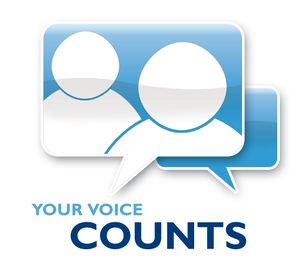Difference between revisions of "E-consultation"
(→What is e-consultation?) |
(→What is public consultation?) |
||
| Line 12: | Line 12: | ||
:''...a local attempt to seek the views of a broad constituency of persons. User involvement is a local attempt to include organized groups of service users in the planning, and occasionally the management, of such services.''<ref>Harrison, S. and Mort M.(1998) Which Champions, Which People? Public and User Involvement in Health Care as a Technology of Legitimation. Social Policy and Administration, Blackwell Publishing. 32(1), pp. 60-70(11)</ref> | :''...a local attempt to seek the views of a broad constituency of persons. User involvement is a local attempt to include organized groups of service users in the planning, and occasionally the management, of such services.''<ref>Harrison, S. and Mort M.(1998) Which Champions, Which People? Public and User Involvement in Health Care as a Technology of Legitimation. Social Policy and Administration, Blackwell Publishing. 32(1), pp. 60-70(11)</ref> | ||
| − | [[Image:Your-Voice-Counts-logo.jpg|thumb|left]] | + | [[Image:Your-Voice-Counts-logo.jpg|thumb|left|Your Voice is Important]] |
The definition offered above gives a broad overview as to what constitutes public consultation. In practice, the variety of forms that public consultation exercises take, vary widely. In some respects the activities involved are similar to that of traditional research methods, such as surveys typically designed to extract attitudinal, behavioural and demographic information. | The definition offered above gives a broad overview as to what constitutes public consultation. In practice, the variety of forms that public consultation exercises take, vary widely. In some respects the activities involved are similar to that of traditional research methods, such as surveys typically designed to extract attitudinal, behavioural and demographic information. | ||
Revision as of 20:27, 27 March 2008
What is public consultation?
Public consultation can be defined as:
- ...the dynamic process of dialogue between individuals or groups, based on a genuine exchange of views, and normally with the objective of influencing decisions, policies or programmes of action. [1]
- ...two-way exchange of information between the Corporation and the public before decisions are made. It is an open and accountable process allowing individuals and groups to participate in the decision-making process of the Corporation. [2]
- ...a local attempt to seek the views of a broad constituency of persons. User involvement is a local attempt to include organized groups of service users in the planning, and occasionally the management, of such services.[3]
The definition offered above gives a broad overview as to what constitutes public consultation. In practice, the variety of forms that public consultation exercises take, vary widely. In some respects the activities involved are similar to that of traditional research methods, such as surveys typically designed to extract attitudinal, behavioural and demographic information.
Increasingly however, processes of public consultation are involving more open forms of dialogue such as focus groups and citizens juries.
Think about these consultation techniques... all require some sort of information gathering and communication process and this is where ICTs come in. If we consider the wide range of information communication technologies that exist and their capability to collapse time and space, their potential to facilitate your consultation is well worth exploring.
What is e-consultation?
The concept of e-consultation is a relatively new one and concerns the use of information and communication technologies (ICTs) to enable participation in public consultation.
E-consultation is the use of electronic computing and communication technologies in consultation processes and is complimentary to existing practices. To find out more please visit http://www.e-consultation.org/
Some of the commonly asked questions:
- I've never heard of it. What is it in a nutshell?
- What is consultation?
- What is the difference between consultation and e-consultation?
- What exactly is 'consultation' and 'e-consultation'? What is the difference between the two?
- Do we need to have website to run e-consultation?
- How e-consultation is useful/helpful in doing proposed consultation process?
- What are the benefits/drawbacks of doing e-consultation for my organisation?
- What are the main techniques?
- what are the kind of e-techniques I can use?
- What are examples of its use?
- What are the examples of successful e-consultation?
Why e-consultation?
E-consultation has value added in terms of the time, costs, participation rates, engagement levels and dissemination processes associated with completing a successful consultation. The use of Information communication technologies (ICT) can facilitate a number of tasks: 1) information transfer, 2) dialogue support, 3) problem exploration and solving, 4) measurement of needs and preferences, 5) joint document writing. Within this guide you will find detailed explanation of the nature of the benefits with accompanying examples.
- Why should I think of using e-consultation?
- When is it appropiate to use e-consulation in instead of or in tandem with traditional methods.
- What are the benefits to me in using e-consultation and e-technology?
References
- ↑ The Consultation Institute: The Consultation Charter 2004
- ↑ Waterfront Toronto
- ↑ Harrison, S. and Mort M.(1998) Which Champions, Which People? Public and User Involvement in Health Care as a Technology of Legitimation. Social Policy and Administration, Blackwell Publishing. 32(1), pp. 60-70(11)
